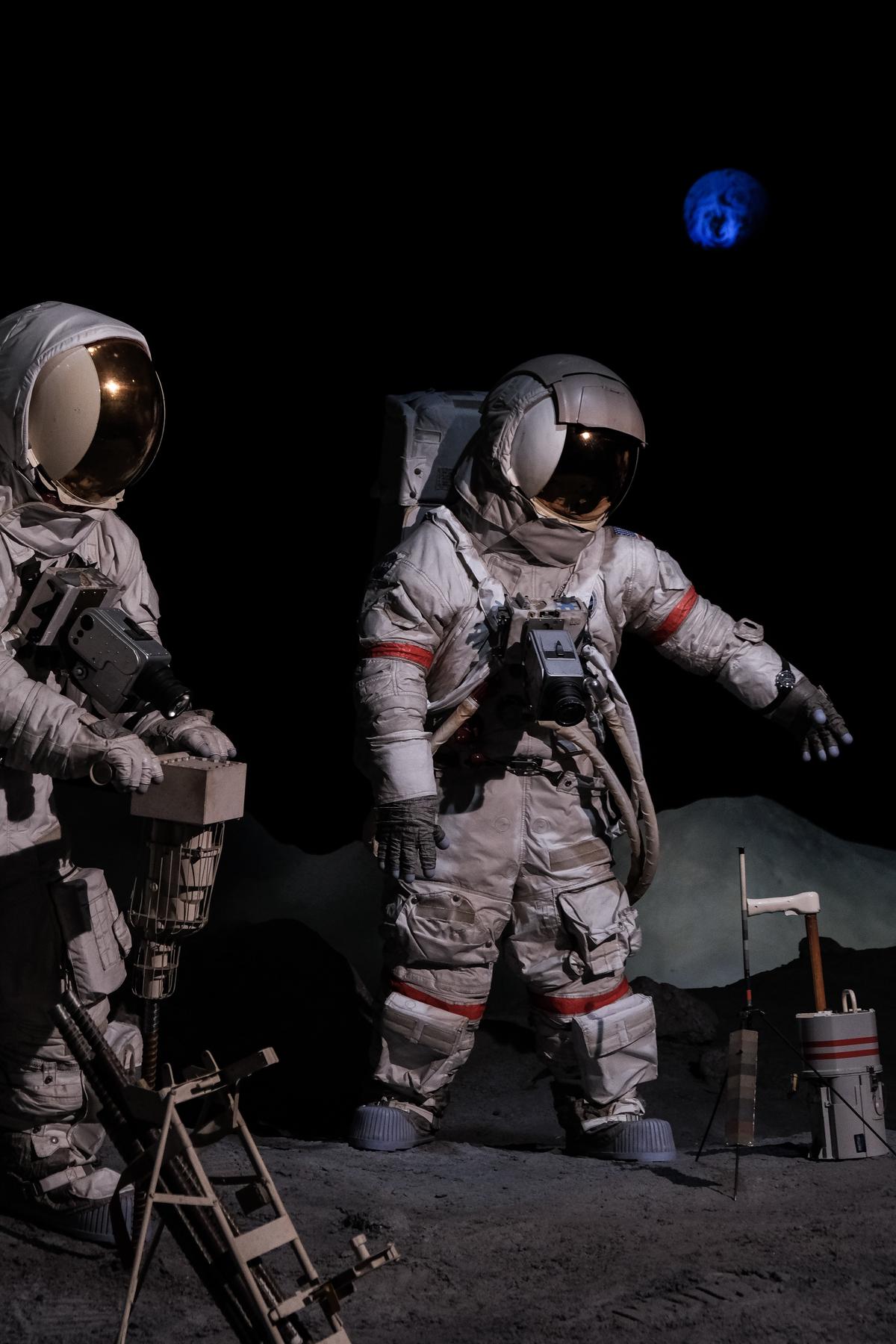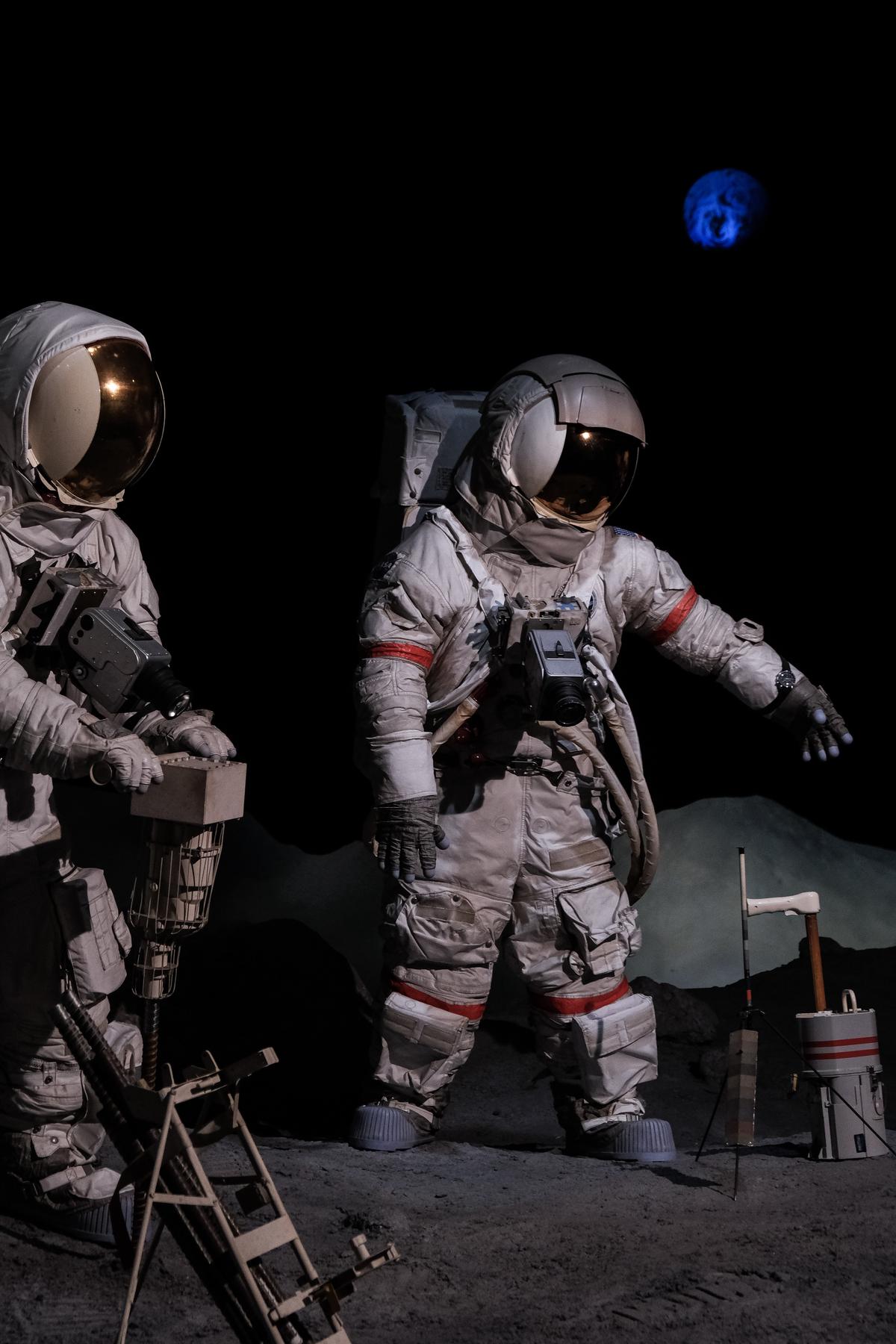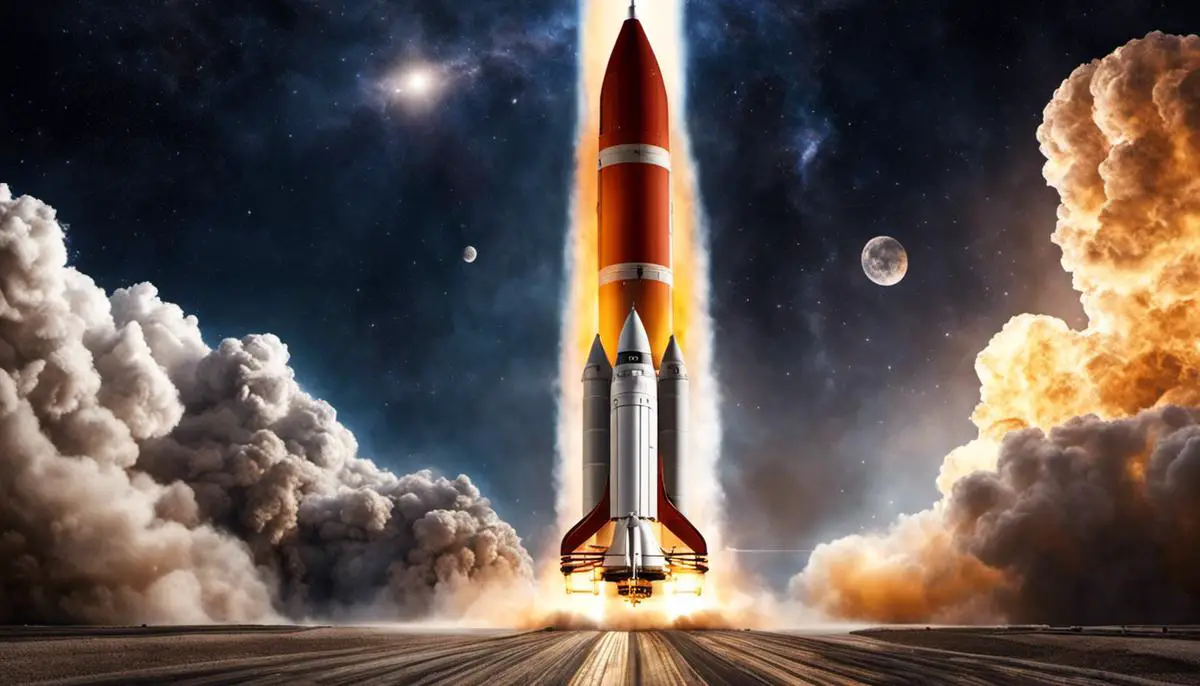The mid-twentieth century saw unprecedented advancements in science and technology, borne out of a rivalry between the world’s then two most formidable powers – the United States and the Soviet Union. Amid the larger political backdrop of Cold War tensions, these nations engaged in a breathless race to assert dominance – not over land, but over the boundless expanse of space. This pursuit marked the genesis of the meticulously strategized and audaciously executed Apollo Program, propelling the space race to new heights. Efforts to explore and conquer the vast cosmic arena not only catalyzed leaps in scientific knowledge but also left an indelible mark on shifting geopolitical dynamics and mankind’s perspective towards space travel.
Contents
Genesis of the Space Race
Genesis of the Space Race
At the end of World War II, the world’s two superpowers – the United States and the Soviet Union – found themselves locked in a bitter and competitive rivalry known as the Cold War. The Cold War was characterized by a drastic increase in technological advancements and ideological victory, giving birth to the Space Race. The Space Race took flight in 1957 when the Soviet Union hurled the first man-made satellite, Sputnik, into orbit. Subsequently, the U.S., feeling threatened and outpaced, solidified its response in the form of the Apollo program.
The Apollo Program and Its Role
The Apollo program was a massive undertaking by NASA, the National Aeronautics and Space Administration, which was founded by President Dwight D. Eisenhower in reaction to Sputnik. Nevertheless, it was John F. Kennedy who later redirected NASA’s focus towards lunar missions, aiming to land a man on the moon and return him safely to the earth before the end of the 1960. The ambition was nothing short of Herculean, intended not only to advance the scientific capabilities of the United States, but also as a move to outdo the Soviet Union in the escalating Space Race.
Tensions and Rivalries
The Apollo missions were imbued with tension and rivalry. Every successful satellite launch or astronaut landing was evidence of technological and ideological dominance – a show of power and prowess on the international stage. The Soviet Union’s achievements, like Yuri Gagarin becoming the first human in space, were a constant source of pressure for the United States. These tensions, therefore, only added more fuel to the nation’s determination to succeed in its lunar ambitions.
Extraordinary Achievements
Despite the intense pressure, Apollo produced breakthrough achievements. The Apollo 1 mission faced a tragic setback when a fire during a launchpad test took the lives of three astronauts. However, this tragedy was pivotal in the implementation of drastic design and safety changes in the following Apollo missions. It was Apollo 11, on July 20, 1969, that achieved the milestone of human history: Neil Armstrong and Buzz Aldrin became the first humans to set foot on the lunar surface while Michael Collins orbited overhead in the command module.
Key Players
Besides the astronauts, there were numerous key players who contributed to the success of the Apollo missions. These included the engineers and scientists at NASA, the political figures who made the critical decisions, and even the American public, whose support was crucial in providing the necessary funding. Notable individuals included Wernher von Braun, a German engineer who played a leading role in rocket design; James Webb, NASA’s second administrator who defended the Apollo program in Congress; and Margaret Hamilton, whose work on flight software was instrumental in the success of the mission.
The Splendid Testament of Apollo: Triumph and Progress in the Space Race
The Apollo program was an illustrious symbol of overcoming obstacles and achieving lofty goals. With each mission, engineers, astronauts, and planners had to conquer incredible challenges and put plans into action through sheer grit. The Apollo missions weren’t just about launching spacecrafts; they fueled the Space Race and pushed scientific possibilities to the hilt. United as a nation with common goals, the Apollo program guided us through the mysterious space frontiers, building a lasting legacy that still motivates us in space exploration today.

Photo by joehan330 on Unsplash
In-depth look at the Apollo Missions
Propelling Forward with Technological Advancements
The space era’s innovative spirit coupled with technology advancements fired up the Apollo missions during the throbbing heartbeats of the Space Race in the late 50s to the late 70s. The unflagging reliance on the ever-evolving Saturn family of rockets punctuated each mission’s success. NASA ingeniously used these spacecrafts as technological test beds, introducing novelties such as the Lunar Roving Vehicle and a wealth of scientific instruments. As the backbone of the Apollo missions’ success, the engineered vessels, innovative technologies, and system developments catapulted the United States to the leading edge of space exploration contributing significantly to the close of the Space Race.
Robotic Precursors and Scouting Satellites
Before the manned missions, NASA launched a series of robotic scout missions, known as Lunar Orbiters and Surveyors. These were used to gather data about the lunar surface, providing detailed maps crucial for the landing site selection and mission planning.
Key Apollo Missions
Among the Apollo Missions, Apollo 1, Apollo 11, and Apollo 13 stand out due to their varied objectives, processes, successes, and challenges. Apollo 1, while a tragic failure that resulted in the deaths of three astronauts during a launch pad test, was a crucial wake-up call to NASA about the risks of space travel and led to significant design and safety overhauls.
In contrast, Apollo 11 was a signal achievement for humanity. On July 20, 1969, American astronauts Neil Armstrong and Buzz Aldrin became the first humans to walk on the moon, achieving President Kennedy’s ambitious call to action. This mission resulted in a wealth of scientific knowledge and showcased the United States’ technological and exploratory prowess.
Apollo 13, intended to be the third mission to land on the moon, turned into a “successful failure” after an oxygen tank explosion threatened the lives of the crew but ultimately showcased the effectiveness of NASA’s planning, problem-solving, and training protocols.
Scientific Endeavors and Discoveries
The scientific endeavors of the Apollo missions extended our knowledge of the Moon and its formation. Rock and dust samples were collected, seismic experiments were conducted, and various observations were made about the lunar surface. These efforts were instrumental in understanding our satellite’s origin, composition, and geologic history. The moon rock samples remain valuable research tools used by scientists globally.
Space Race: A Battle of Superpowers
The Apollo missions occurred amidst the backdrop of the Space Race, a competition between the United States and the Soviet Union for supremacy in spaceflight capability. The successful landing on the moon by Apollo 11 culminated in an American victory in the Space Race. This event not only fueled further aspirations for space investigations but heightened national pride and increased global standing.
Impact on Society and Culture
The Apollo missions had a profound impact on society, influencing pop culture, inspiring technology advancements, and sparking the imagination of countless individuals worldwide. The phrase “if we can put a man on the moon, we can…” came to exemplify the power of human ambition and ingenuity in the face of seemingly insurmountable odds. Despite the intense Cold War rivalry that drove the Space Race, the Apollo missions ultimately showcased the unity-prevalent in humanity’s desire to explore the unknown.
Summing Up
The Apollo missions, spanning from 1961 to 1972, have indelibly marked their spot in human history, revolutionizing our understanding of the universe. These missions turned the moon from a mere celestial body to a human footprint, advancing scientific knowledge and paving the way for technological leaps. Although fueled by the competitive undercurrents of the Space Race, these missions have given rise to a new era of cooperation in space exploration.

Impacts and Legacy of Apollo missions on the Space Race
Deep Dive into the Apollo Missions
Initiated by NASA (National Aeronautics and Space Administration), the Apollo missions were a succession of manned space flights aimed at achieving former President John F. Kennedy’s audacious goal of landing a man on the moon and returning him safely to Earth. These missions, which lasted till 1972, played a pivotal role in catapulting America to the forefront of space exploration, causing profound shifts in the world’s political, cultural, and technological landscapes.
Political Impacts
The Apollo missions played a crucial role in the space race, an intense competition between the two Cold War adversaries – the United States and the Soviet Union – to demonstrate their technological superiority and garner global prestige. The success of these missions was instrumental in establishing America’s dominance in space exploration, a development viewed as symbolic of its Cold War victory.
These missions led to an increase in public support for space exploration, which had previously been limited due to the high costs associated with it. The astonishing images beamed back to Earth, showing American astronauts walking on the moon’s surface, led to a massive outpouring of nationalistic pride, boosting the country’s international stature.
Technological Advancements
The Apollo missions led to several technological advancements that have since become a part of our everyday life. In the effort to make spacecraft lighter and safer, NASA engineers developed a host of innovative technologies. For instance, flame-resistant textiles developed for the astronaut suits are now used in firefighter gear and airline seat covers.
The need for precise navigation of the spacecraft led to the development of digital fly-by-wire systems, which have become standard in commercial airplanes. Other technological spin-offs include memory foam, which was initially devised to provide crash protection for astronauts, and cordless power tools, which were developed to allow astronauts to perform maintenance tasks on the moon’s surface.
Scientific Achievements
One of the most significant scientific achievements of the Apollo missions was the collection of lunar samples. These samples have provided invaluable insights into the moon’s geology and the solar system’s history. For example, they have confirmed that the moon was formed from debris thrown up after a massive object collided with the Earth about 4.5 billion years ago.
Scientists are still analyzing these samples to unravel new secrets about the universe we inhabit. The missions also led to advances in astronomy and planetary science, further fueling our curiosity and compelling us on toward deeper space exploration.
Cultural Impacts
Culturally, the Apollo missions reshaped our perspective on space and our place in the universe. The images of Earth taken from the lunar surface, particularly the iconic “Earthrise” photograph, highlighted the fragility and unique beauty of our planet in the vast cosmic void. This profoundly affected human consciousness, ushering in a renewed focus on the environment and sustainability.
Similarly, the missions have had a lasting impact on popular culture, inspiring countless books, movies, and songs. They instilled awe and wonder in the public mind, fueling a fascination with space that endures to this day. From Star Trek to Interstellar, the influence of the Apollo missions is apparent in various facets of our culture.
Legacy
Notably, the Apollo Moon Landing in 1969 stands as one of the most memorable moments in television history, with hundreds of millions of people across the globe glued to their screens, reveling in the triumph of human achievement. These missions dramatically expanded our horizons, altering our perception of what is humanly possible.
The legacy of the Apollo missions extends far beyond the space realm, impacting our technological capabilities, scientific understanding, cultural norms, and political alignment. It sparked the public imagination and made space exploration an integral part of our collective consciousness. These missions taught humanity valuable lessons in ambition, collaboration, and perseverance, shaping the course of human history.

Photo by joehan330 on Unsplash
The Apollo program, as much as it was a response to the Cold War, was a testament to human resolve and the unquenchable thirst for knowledge. Pioneering progress in space exploration, the Apollo missions underscored the duality of our existence – our humble place in the cosmic order simultaneously juxtaposed with our boundless capabilities. The legacy of this ambitious endeavor reverberates through scientific and technological landscapes even today while underlining the shift in power dynamics in the post-Cold War era. Far more than just lunar voyages, the Apollo missions echoed through time, building a legacy that will forever provide fuel for taking giant leaps in mankind’s cosmic journey.
